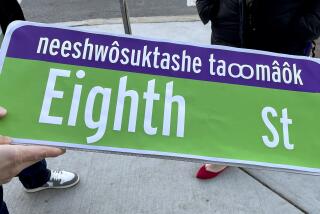Newly Arrived Arctic Animals Trip Over Indigenous Tongues
REYKJAVIK, Iceland — What are the words used by indigenous peoples in the Arctic for hornet, robin, elk, barn owl or salmon?
If you don’t know, you’re not alone.
Many indigenous languages have no words for legions of new animals, insects and plants advancing north as global warming thaws the polar ice and lets forests creep over tundra.
“We can’t even describe what we’re seeing,” said Sheila Watt-Cloutier, chairwoman of the Inuit Circumpolar Conference, which says it represents 155,000 people in Canada, Alaska, Greenland and Russia.
In the Inuit language Inuktitut, robins are known just as the “bird with the red breast,” she said.
Inuit hunters in northern Canada recently saw some ducks but had not figured out what species they were, in Inuktitut or any other language.
In Arctic Europe, birch trees are gaining ground and Saami reindeer herders are seeing roe deer or even elk, a forest-dwelling cousin of moose, on former lichen pastures.
“I know about 1,200 words for reindeer -- we classify them by age, sex, color, antlers,” said Nils Isak Eira, who manages a herd of 2,000 reindeer in northern Norway.
“I know just one word for elk -- sarvva,” said 50-year-old Eira. “But the animals are so unusual that many Saami use the Norwegian word, elg. When I was a child it was like a mythical creature.”
The lack of words to describe newcomers does not stop at animals and plants. Words, such as thunderstorm don’t exist because they are phenomena indigenous peoples have never known.
More to Read
Sign up for Essential California
The most important California stories and recommendations in your inbox every morning.
You may occasionally receive promotional content from the Los Angeles Times.









